You have spent a lot of marketing dollars and effort to engage potential customers, curating leads, and filtering them so that (ideally) the most qualified leads reach your landing page.
Hence, it is impertinent that the final phase of the marketing effort compels converts them, compelling them to perform the desired action — whether it’s a sign-up, a sale, or seeking additional information.
Great landing pages that convert well differ from one that transfer qualified traffic to competition because of three things:
- Engaging page design with intuitive navigation,
- Powerful compelling sales copy
- Consistently measuring and changing the efforts
Your sales copy forms the meat of your landing page.
The good news is that decades of progress that have brought us ever more powerful advertising tools, there are aspects of compelling copywriting that have withstood the test of time since the days of John Capbles, David Ogilvy, Rober Collier, and Eugene Shwartz.
Start With the End in Mind
“Before you put pen to paper, before you ring for your stenographer, decide in your own mind what effect you want to produce on your reader — what feeling you must arouse in him.”
— Robert Collier
Imagine that a visitor is on your landing page.
What do you want him/her to do next?
Read your sales copy and marvel at its creativity? Bookmark the page? Or perform some measurable action that brings you closer to selling a service/product, increasing brand following, boosting brand awareness, or something else?
Start with the end in mind.
Define the purpose and function of the landing page. Now work your way back to map creates the logical flow of your copy. The flow and tone of your sales copy (or variations thereof) emerge from the SINGLE end result you have in mind.
Yes, just one result. As the rule of thumb goes: one landing page = one acutely obvious purpose.
You may want the visitor to sign up for the newsletter, try a free trial, download a resource, share the app, and more all at once.
That’s not how it works. The visitor will perform just one action.
Your job is to prevent them from moving on.
And that is only possible if your sales copy is linear, leading them to a single call-to-action. That is only possible if you start working on your copy after establishing the end goal.
Speak to Just One Reader
“Good advertising is written from one person to another. When it is aimed at millions it rarely moves anyone.”
– Fairfax M. Cone
NEVER write a sales copy for all of your visitors, the hundreds and the thousands you are expecting to come frolicking to your landing page.
You’ll only end up writing a lecture.
Write it for just one person. Make it personal — like you’re talking to just that one visitor who is on your landing page.
When you write for only one, you automatically focus on the pain points that the audience may be facing, and the content becomes personalized.
Write a Tranquilizing Headlines
Then Kill it with a Persuasive Sub-Head
Interest, connection, and engagement.
They all begin where the headline is.
Headline or the title of your landing page must perform a truck load of actions:
- It must be short
- It must grab the visitors attention
- It should inform the visitor what the landing page is all about
Your headline can do that by:
- Emphasizing the problem and the readers will know what the following copy will solve for them.
- Directly telling them of the offering that the service/product will deliver
- Or you can back the original headline with a persuasive sub headline to elaborate the first headline.
Amplify the power of the headlines with powerful, appropriate, and guiding images. Humans are hardwired to process images faster, and we love to connect them to create stories. Use images to amplify your copy, and choose the images so that they visually communicate what product/service will offer to the audience. If you need any website photographer done, just visit this page to see how we can help you.
Be Action Oriented
The clarity and precision of your message should be led by an action oriented copy.
Your visitors know what a landing page is. It’s supposed to sell them something — an idea, information, a solution to their problem, etc.
Why waste valuable time deferring the inevitable?
Be direct.
Address their pain points, explain the product, and use compelling words and call-to-actions to guide them to the next step — the next sentence, the next paragraph, the form, or the CTA button.
Here are two great examples of companies that tweaked their copy to become more action oriented.
The results were stunning.
L’Axelle Explodes with 93% INCREASE in its CTR
Here’s the original homepage for the German cosmetic firm, L’Axelle. The original copy tried to portray a value preposition around the fact that their product will relieve and relax their customers. It did not generate the expected CTR:
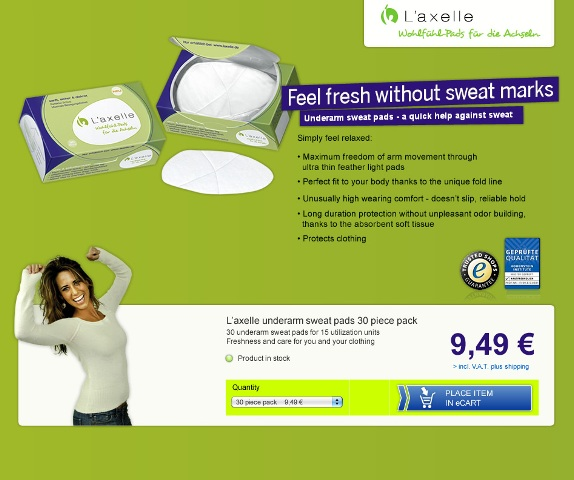
L’Axelle changed the headline and sub-copy to be more action-oriented.
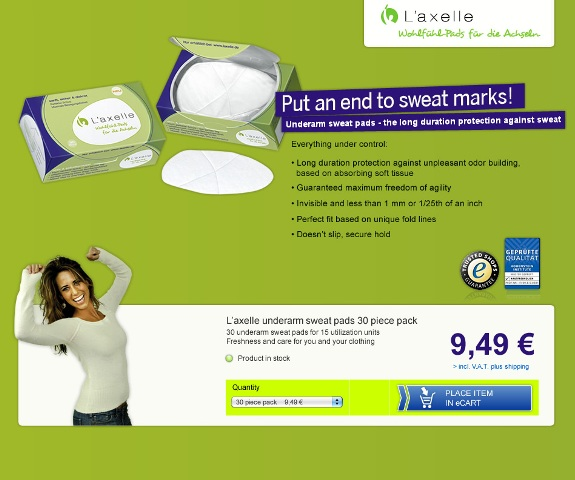
The change brought a conversion rate of 38.3%, 93% BETTER THAN the original!
Tell your visitor the immediate result they will gain, or the problem they can overcome on this page. Then show them the CTA button.
Veeam Achieves 161.66% INCREASE in CTR with SHORTER Copy
A private IT company, Veeam Software partnered with different technology giants to create custom solutions for its customers. This meant that it could not offer fixed pricing packages on its websites.
They decided to include a sales inquiry form to increase engagement with its customer support team. They tested two copies:
A control copy that read “Request a Quote”
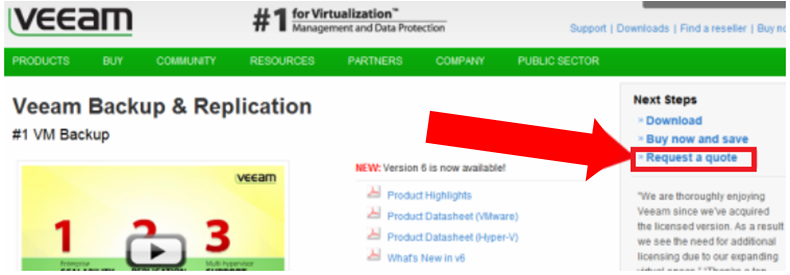
A test copy that read “Request Pricing”
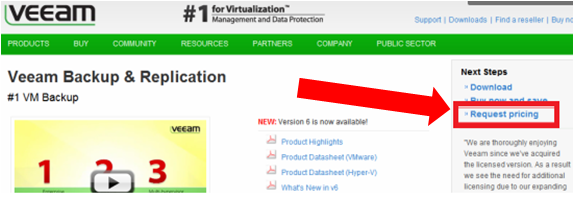
Kaya Skin Clinic Boosts Sales By 22% With less generic CTA
Action oriented micro-copy can fail you if you are not using the right words.
A case in point is the Kaya Skin Clinic which was looking to increase their booking appointments through their website. They tested variations for their design, including making their CTA more user-focused:
Control: Generic “for skin consultation, Register Here”
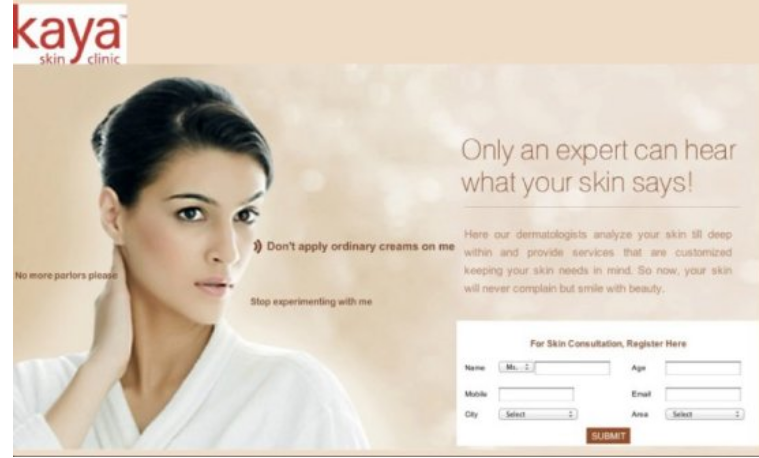
Test 1: “I want expert opinion. Sign me up!”
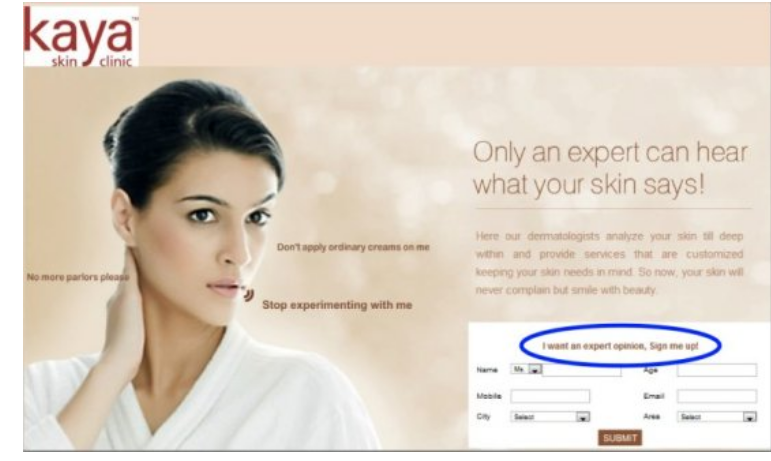
Test 2: “I want expert opinion. Sign me up for a skin consultation”
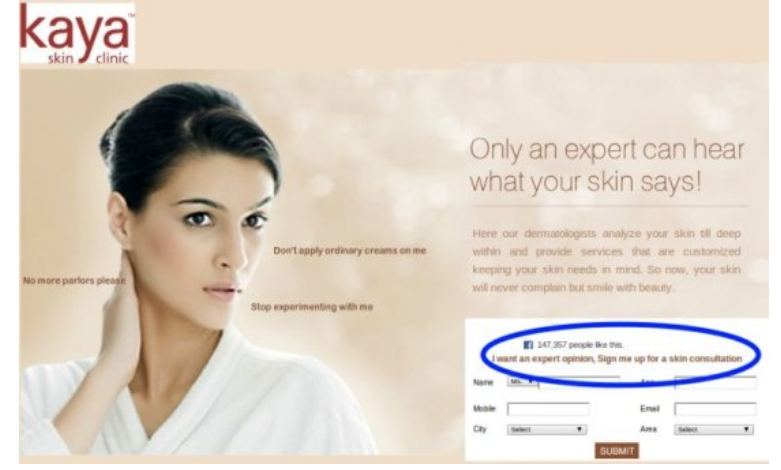
Test 1 converted 137.5% better than control increasing their sales by 22%!
Your copy must focus the attention of your customers and convey the immediate benefit of clicking the CTA. In Kaya Skin Clinic’s case, imagine yourself as the visitor.
Compare “For Skin Consultation, Register Here” with “I want an expert opinion. Sign me up!”
Which one is more customer oriented? The second one, and it brought an additional 22% in sales without spending a cent on paid advertising for their home page.
Include Testimonials and Reviews
We’re talking about testimonials that add substance to the copy.
Often sales page use two-liner testimonials that only speak about the satisfaction of the customer. It’s a waste of your real estate, and a waste of your visitor’s time. Instead you should spend time curating the right testimonials from customers.
The right testimonials inform the potential customers about one or more of the following:
- What the product looks like
- How it solved their problem, and
- Why they found it better than other products
You can also include reviews, press mentions, and showcase guarantee seals, and corporate endorsements to build credibility for what your copy is informing your customers about.
So how do you get started?
Realize that your website is a faceless brochure on the internet. Unlike a real store, visitors cannot assess how dedicated or committed to customer service your business really is. They gauge your authenticity from what you offer them on the page.
Hence, no matter how well ranked your page is, or how compelling and benefit rich your web copy is, they will look for “real” sources that can verify how good your product really is.
They will look for review sites and engage in forum discussions.
Why not bring the human touch to your landing page by adding customer/client testimonials and reviews as additional substance for your copy?
Why Add Reviews and Testimonials?
BECAUSE, you have a lot of competition.
WHICH means that your competitors are using messaging tactics for differentiating themselves from one another, and you.
THIS translates into massive information overload for the qualified customer.
Unless your visitors find the assurance that they are not the first users of your product, and that your product is worth their money (or someone else’s money for that matter), they are going to move about your page, searching for reviews, and possibly landing on more assuring pages.
Adding reviews avoids the friction just before the point of conversion.
Remove it by adding reviews and testimonials.
In Conclusion — Convince and Convert with Compelling Copy
Landing pages are the reason why you have been spending your resources, talents, time, and money into marketing your business. Why slip the slope when all that effort has distilled the most qualified leads to your doorstep?
Use the time tested wisdom and insights above, and given that it is not an exhaustive list, add to the discussion in the comments!
If you need any help with your website copywriting, we have dedicated whizzes ready to pick up the phone. Just visit this page for more information. Or call me personally on the number below.
Open the conversation.
Ask us anything. From basic questions to complex queries about marketing, optimisation and design.
Get in touch